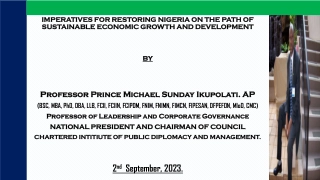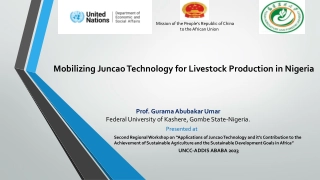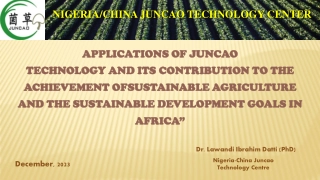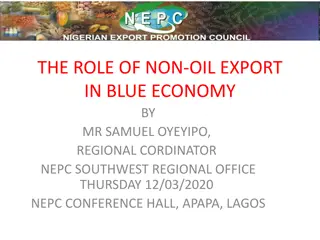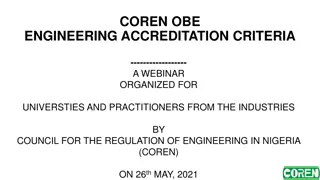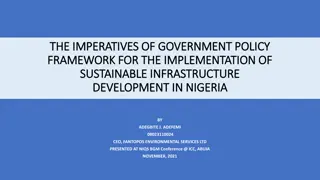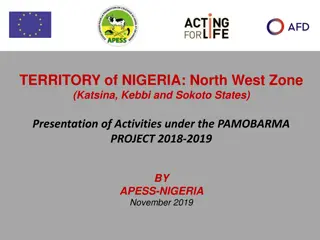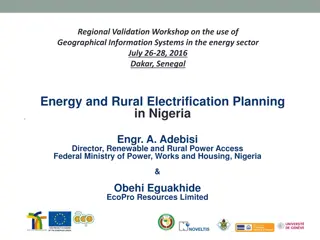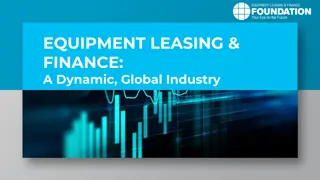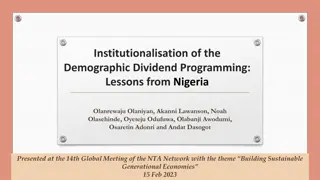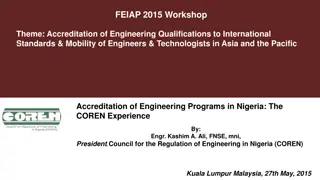
Operation and Equipment Development in Nigeria for Sustainable Engineering
Utilizing the acronym OPERATE, this text highlights the essential aspects of operation, management, equipment development, and engineering maintenance in Nigeria. The focus is on fostering sustainable engineering practices to ensure continued progress and innovation. It underscores the importance of strategic planning and effective resource utilization for long-term success in the engineering field.
Uploaded on | 0 Views
Download Presentation

Please find below an Image/Link to download the presentation.
The content on the website is provided AS IS for your information and personal use only. It may not be sold, licensed, or shared on other websites without obtaining consent from the author. If you encounter any issues during the download, it is possible that the publisher has removed the file from their server.
You are allowed to download the files provided on this website for personal or commercial use, subject to the condition that they are used lawfully. All files are the property of their respective owners.
The content on the website is provided AS IS for your information and personal use only. It may not be sold, licensed, or shared on other websites without obtaining consent from the author.
E N D
Presentation Transcript
O P E R AT I O N , M A N A G E M E N T E Q U I P M E N T D E V E L O P M E N T I N N I G E R I A M A I N T E N A N C E O F E N G I N E E R I N G F O R S U S TA I N A B L E A N D BY IDU-EMEKA CHIDERA 17/ENG02/034
INTRODUCTION Poor maintenance is known to be a significant factor militating against the achievements of enhanced productivity and full utilization of industrial facilities in developing countries like Nigerian(Sodiki, 2000). The ability of equipment, machineries or plants accurately and reliably to produce desired output could only be achieved through proper maintenance culture,which is significant to any nation s economical development.
It is an undeniable fact that production of maintenance- free infrastructure is not feasible. The reality is that all the elements and components that make up an engineering infrastructure unavoidably, deteriorates with time due to inherent defects in design and construction, and the effects of environmental agents and users activities. All engineering infrastructures are subject to aging, wear and tear in the performance of their functions and deterioration by exposure to outside operating environment.
ENGINEERING AT WORK WITH EQUIPMENT
LITERATURE REVIEW There are existing views to the definition of sustainability concept; sustainable design/construction is one of such views. Sustainable infrastructure is viewed as the one that eliminates associated negative impact of infrastructures on user and environment.One of the schools of thought is the one that considers sustainability from the sustainable design/construction perspective, that, it is the design of and construction of infrastructure in a way that will enable the present generation meet their needs without compromising the prospect of future generation in meeting their needs.
Another school of thought, viewed sustainable concept from the perspective of eliminating associated negative impact of infrastructure on users and environment, this school of thought emphasize maintaining infrastructure form and structure. (2) belong to this school of thought, that it is a design and construction practices that significantly reduce or eliminate the negative impact of building/infrastructures on the environment.
Maintenance-free or self-sustaining infrastructure is highly desirable but not feasible. Infrastructures deteriorates with time due to wear and tear effect on the component, users and occupiers activity, inherent defects in design and construction and effects of environmental role in the deterioration of infrastructures component; hence left to themselves, facilities will eventually become inefficient,unreliable and fail opined that function change or function termination of the user, owner or manager is limited once the building s acceptance threshold has been passed.
MAINTENANCE OF EQUIPMENT IN A FACTORY
Engineering infrastructures are required virtually at all facets of human endeavor, they are found at various stages of human economic and social economic life, buildings are common one around, it as well includes road, dam, equipment in building, production structures, drainage facilities, waste disposal and processing facilities, material production units, health facilities, transportation units, electricity outfits, and telecommunication systems. However, huge cost is always involved in infrastructures maintenance.
Constructing sustainable engineering infrastructure is approached in different ways with different priorities in different countries ranging from ecological impact on the environment, economic, social cultural consideration, density and demography of population, availability of land and water, energy production and supply, loss of natural habitat to lack of adequate facility to handling and resultant waste processing. So also strategies that could be adapted varies, however the some of the proactive strategy recommend could be any of the following or combination of more than one. Integrated project delivery system, re-engineering of construction process, environmental quality of construction, new construction concepts, assembly and disassembly approach, public awareness, setting of benchmark for regulation and best proactive, research and development, capacity building of construction sector, and energy conservation.
(i) Previous users action (Vandalism): Users action often constitute a great source for maintenance need in infrastructure maintenance. This could be described as vandalism, it has its roots in the social fabric of the community, and its often out of psychological disposition to cause damage, it is as well often calculated intention to express dissatisfaction to authority or society at large (7). Among the factors adduced as responsible for act of vandalism are wrong choice of materials, poor space layout, poor lighting arrangements and lack of security among others. Vandalism impairs the aesthetic of building, and reduces its life span and cost intensive.
(ii) Environmental stress effects on infrastructure: (Sick building Syndrome) Environmental agencies such as climatic conditions (rainfall, humility, temperature, wind groundwater conditions), chemical agents like chlorides and sulphates impact stress building and occupants. These stressors acts base on orientation of the structure and on external elements of the structure. The resultant effect of these stressors on the building is referred to as sick building syndrome.
(iii) Deficiency in design construction and interdependency of building components: The nature in which some elements in building were designed often hinders their maintainability. This may result from non-availability of replacement parts and components as in the case of many imported household items like lift,and air-conditioning (including Nigeria), in this kind of situation therefore, the most effective maintenance strategy should be one that minimizes the incidence of maintenance works through appropriate design.To be able to sustain a design or concept, it should be maintainable, and maintainability in the real sense of it is a measure of the ease of maintaining a building or its elements and components, which depends not only on the design and technical aspects but also on the availability of the building or components,when required for maintenance.
RECOMMENDATIONS Introduction of new construction and maintenance concepts. Integrated approach in infrastructural design and construction. Empowering workers through knowledge base consolidation approaches such as: Seminars Workshop,Vocational acquisition course,and Refresher course Clear communication of maintenance policy to all stakeholders. Incorporating eco-friendly construction material into building at building stage Formulation of quality assurance team to oversee various maintenance operations.
Mechanization of production processes where necessary. Periodic retrospective check on process/success achieved at various policy and operations. Provision of good environment,well ventilated workspace,first aid and protective items. Site work environment Reengineering of building and maintenance process.
CONCLUSION Consequently the lack of effective maintenance strategies have contributed to low production which gives rise to low income and poor living standard in Nigeria. Besides, irregular power supply in Nigeria and over dependence on road transport when railway line exists is attributed to lack of effective maintenance strategy. In consideration of the colossal losses in varieties of ways emanating from ineffective maintenance strategies, it becomes absolute necessary that the resource managers have to strictly consider the implementation of the suggested strategies of effective engineering plant maintenance articulated in this paper.

